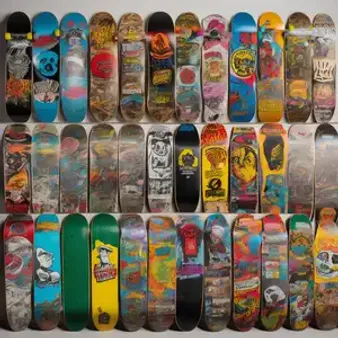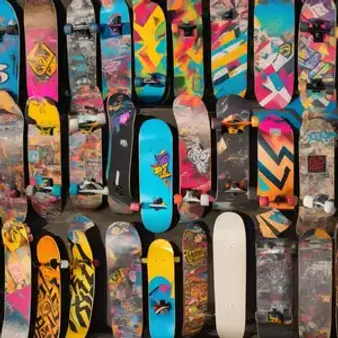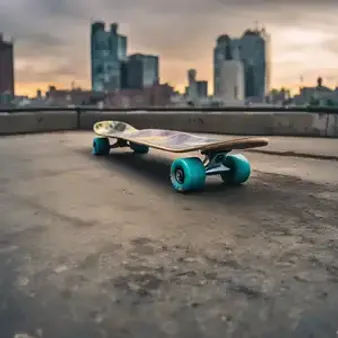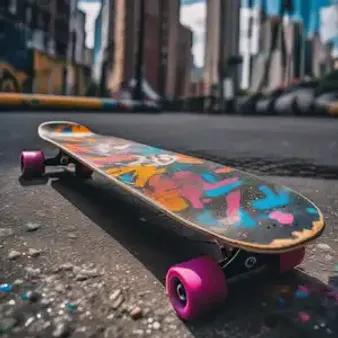Table of Contents
The 1990s was a defining era for skateboarding, witnessing a surge in popularity and innovation. kizworld takes you back to this rad decade to explore the popular skateboards that ruled the streets and halfpipes. From iconic brands like Powell Peralta and Santa Cruz to the rise of street skating, we'll delve into the boards that shaped a generation of skaters.
Category | Details |
|---|---|
Popular Brands | Powell Peralta, Santa Cruz, Girl, Chocolate, Birdhouse, Plan B, World Industries, Blind |
Deck Shapes | Twin-tail, popsicle, wider decks for street skating |
Materials | 7-ply maple, carbon fiber (for some high-end models) |
Influences | Rise of street skating, skateboarding videos, punk rock music |
Iconic Brands of Popular Skateboards in the 90s
The 90s, man, that was a golden age for skateboarding! Like, think about Powell Peralta, with their screaming hand logo and Bones Brigade videos. They were legendary. Those videos, they weren't just about tricks, they showed the personalities of guys like Tony Hawk and Steve Caballero. We used to watch those tapes over and over, trying to learn every move. And Santa Cruz, with their iconic screaming hand logo, they had Jim Phillips' art, which was so wild and colorful. It was like, skateboarding met heavy metal, and it was awesome!
But it wasn't just the big names. Girl Skateboards came along and shook things up. They had a more playful, artistic vibe, and their videos were hilarious. Remember Chocolate Skateboards? They were kinda like Girl's sister company, with a similar vibe. These brands proved that skateboarding could be creative and fun, not just about being hardcore.
- Powell Peralta
- Santa Cruz
- Girl Skateboards
- Chocolate Skateboards
Then you had Birdhouse, started by Tony Hawk, which was all about pushing the limits of vert skating. Plan B Skateboards, had a team of absolute shredders like Danny Way and Colin McKay. They dropped some of the most mind-blowing video parts of the decade. World Industries, they were the bad boys of skateboarding, with controversial graphics and a rebellious attitude. And Blind Skateboards, founded by Mark Gonzales, a true skateboarding legend, was known for its raw and street-focused style. These brands, they all added to the diversity and excitement of skateboarding in the 90s.
Iconic Brands of Popular Skateboards in the 90s
Deck Construction and Shapes: Popular Skateboards in the 90s
Back in the 90s, skateboards were evolving quickly, especially the decks. Most decks were made from good ol' 7-ply maple wood, which was strong and could take a beating. You know, those days when you were learning to ollie and landed a bit rough? Yeah, maple could handle it! Of course, some fancy high-end boards were starting to use carbon fiber, which was super light and strong. But for most of us, maple was the way to go. It was like the trusty pickup truck of skateboard materials - reliable and tough.
Now, the shapes of boards were changing too. The twin-tail shape, with its symmetrical ends, became super popular. It was perfect for street skating, allowing skaters to do tricks in both directions. Think about it - no need to flip the board around for a switch stance! It was like having two skateboards in one. And then there was the popsicle shape, which was basically a refined twin-tail, even more symmetrical and streamlined. It became the standard shape that we still see today. Plus, boards started getting wider, which gave skaters more foot space for landing tricks and grinding rails. It was like having a bigger dance floor for your feet - more room to show off your moves!
Shape | Description |
|---|---|
Twin-tail | Symmetrical ends, ideal for street skating |
Popsicle | Refined twin-tail, symmetrical and streamlined |
Deck Construction and Shapes: Popular Skateboards in the 90s
The Rise of Street Skating and its Influence on Popular Skateboards
Street skating, man, it was like a revolution in the 90s! Kids started seeing the whole world as their skatepark - stairs, handrails, curbs, everything became an opportunity for a trick. Forget the fancy ramps and bowls, the streets were where the real action was happening. This shift in style had a HUGE impact on the boards we rode. Remember those wider decks I mentioned? They were perfect for grinding and had more space to land those street tricks. It was like having a tank built for the concrete jungle, not just a smooth skatepark.
Think about guys like Mark Gonzales, Daewon Song, and Kareem Campbell - they were pioneers, pushing the limits of what was possible on a skateboard. They weren't just doing tricks, they were creating art with their boards. And the skateboard videos, man, they were like our bibles! We'd watch them religiously, studying every move, every style. Videos like "Blind Video Days" and "411 Video Magazine" showcased this raw street skating energy and influenced a whole generation. You can check out our article about vert to learn more.
Skater | Style |
|---|---|
Mark Gonzales | Creative, innovative street skating |
Daewon Song | Technical street skating, known for his tricks and style |
Kareem Campbell | Powerful street skating, known for his big gaps and rails |
The Rise of Street Skating and its Influence on Popular Skateboards
The Legacy of Popular Skateboards in the 90s
The 90s skateboarding scene wasn't just about cool boards, it was like a whole cultural explosion! It influenced fashion, music, art, and even how we looked at cities. Remember those baggy jeans and oversized t-shirts? Yeah, that was the skateboarder look. Punk rock and hip-hop were the soundtracks to our sessions. And those skateboard graphics, they were like mini-artworks, often edgy and rebellious, kinda like the skaters themselves! It's like skateboarding cracked open this creative energy, and it spilled over into everything. You can check out our article about how to get started with skateboarding to learn more.
The boards from the 90s weren't just pieces of wood; they were symbols of a generation that wanted to break free and do things their own way. Imagine a kid in a small town, feeling kinda stuck, then he picks up a skateboard. Suddenly, he's not just walking down the street, he's flying down it, grinding rails, and doing ollies over benches. It's like the skateboard gave him wings! And that feeling, that sense of freedom and creativity, it's still inspiring kids today. The 90s skateboards were like the spark that lit a fire, and that fire is still burning bright.
Legacy | Impact |
|---|---|
Cultural Influence | Fashion, music, art |
Sense of Freedom | Empowerment and self-expression |
The Legacy of Popular Skateboards in the 90s
Final Thought
The popular skateboards of the 90s weren't just pieces of wood; they were vehicles of self-expression, rebellion, and pure fun. They represented a cultural shift, propelling skateboarding from a niche hobby to a global phenomenon. Whether you're a seasoned skater or simply curious about the history of this iconic sport, the 90s skateboards offer a fascinating glimpse into a time when creativity and individuality reigned supreme.